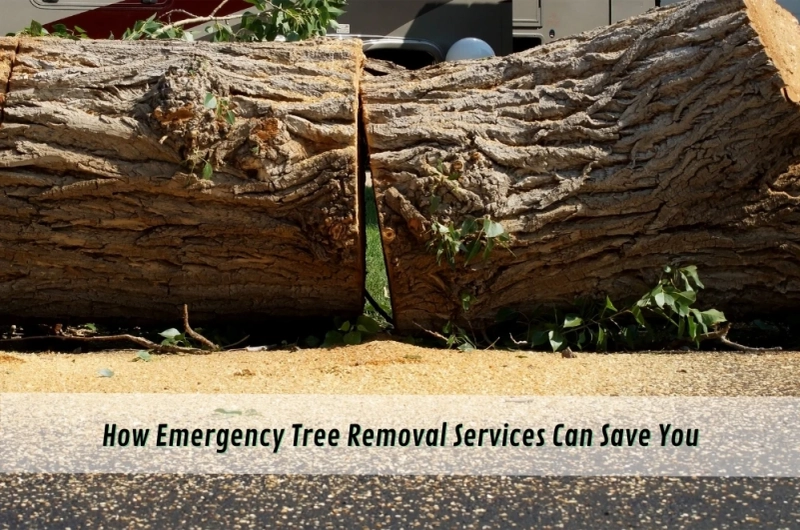When a tree suddenly collapses on your property, every minute matters. I found this out first hand when a fierce storm snapped an ageing blue gum near my back fence. In just seconds, branches were leaning against the shed, and I had no clue if it was secure or about to come crashing down onto the house. I stood there, soaking wet from the rain, holding a torch, completely lost on what to do next. Should I call the council? Was it safe to even go near it? In moments like these, having access to an emergency tree removal company isn’t just convenient — it can be lifesaving. And while it’s something you hope to never need, when that time comes, knowing what to expect can make all the difference.
What qualifies as a tree emergency?
While a fallen tree might seem dramatic, not every case is an emergency. Generally, it qualifies if:
- There’s an immediate risk to life or property
- Access routes (driveways, streets, footpaths) are blocked
- Trees are entangled with powerlines or utility poles
- The tree is unstable and may collapse further
- It poses a danger during a bushfire or storm season
Most emergency crews are available 24/7, particularly during peak storm months in Australia. When the winds pick up, they’re often racing from one fallen tree to the next, often before sunrise.
Risks of delaying action
The consequences of "waiting it out" can be steep. Fallen or compromised trees are unpredictable. They can roll, splinter, or shift under pressure, particularly when resting on fences or rooftops.
Delayed removal may lead to:
- Injury risks from collapse or debris
- Escalating damage to surrounding structures
- Increased liability if the tree falls onto neighbouring property
- Pest infestation, especially termites or rodents nesting in rot
In one case I worked on, a client delayed a call for three days after a storm. By then, water had seeped into the trunk, and fungal growth had started climbing up the siding of their home.
What to expect from a professional crew
Emergency tree services are fast, but methodical. The good ones prioritise safety over speed and come prepared for a range of urban or rural situations.
Here’s what a typical response looks like:
- Rapid on-site assessment — Visual inspection, risk zone setup
- Equipment mobilisation — Chainsaws, ropes, cranes or cherry pickers
- Branch-by-branch removal — Prioritising safety and structural control
- Clean-up and disposal — Mulching, logging, or complete haul-away
And while not always required in an emergency, experienced crews may advise whether the tree falls under council rules or protected species legislation. For more on council guidelines, this overview of tree management services is a solid reference point.
Why you shouldn’t DIY emergency removal
It’s tempting to grab a chainsaw and have a go, especially when the mess is blocking a driveway or littering the yard. But emergency tree removal is nothing like weekend yard work.
Dangers include:
- Unstable limbs or trunks falling unexpectedly
- Tension-loaded wood springing as it’s cut
- High-voltage powerline contact
- Lack of insurance coverage if something goes wrong
A neighbour of mine once tried to remove a half-fallen branch wedged in a hedge. The moment it shifted, the weight crushed part of the fence and nearly took out his knee. If in doubt — don’t.
Choosing the right emergency tree service

When every hour counts, it’s easy to choose the first available number online. But a few quick checks can save you a lot of grief:
- Are they insured and licensed?
- Do they have experience with emergency work?
- Can they respond within 2–4 hours?
- Do they offer after-hours or weekend availability?
- Can they direct you to professional tree removal providers for non-urgent follow-up work?
You don’t have time to gamble when there’s structural damage involved. Find a crew that ticks all the boxes.
Proactive tips: avoid emergencies before they start
Many tree-related emergencies are preventable. Schedule annual inspections by a qualified arborist, especially if:
- Your property has tall, mature trees
- Branches overhang buildings or driveways
- You’re in a storm-prone or fire-risk region
Preventative pruning and risk assessment are much cheaper — and calmer — than waiting for a tree to crash into your roof.
If you're unsure what risks your trees pose, check out educational resources from tree removal experts to understand how arborists identify potential hazards early.
Final thoughts: fast action = fewer regrets
When a tree fails unexpectedly, it’s chaotic. But knowing who to call — and what to expect — makes all the difference. Emergency tree services aren’t just there to cut wood; they’re trained to protect lives, minimise property loss, and help you regain control.
In my case, the team arrived within two hours. The tree was off the shed by sundown, and we’d avoided a much bigger mess. It was a cost, sure — but compared to the damage that could’ve been done, it was worth every cent.
So next time a storm rolls through, or you notice a cracked trunk swaying after rain, don’t wait for it to fall. Call the experts, and let the emergency tree removal team do what they do best.


